Knee pain: know the symptoms, causes and prevention measures
At Stannah we know how knee pain can affect our customers’ daily routine and independence. That is why prevention is key.
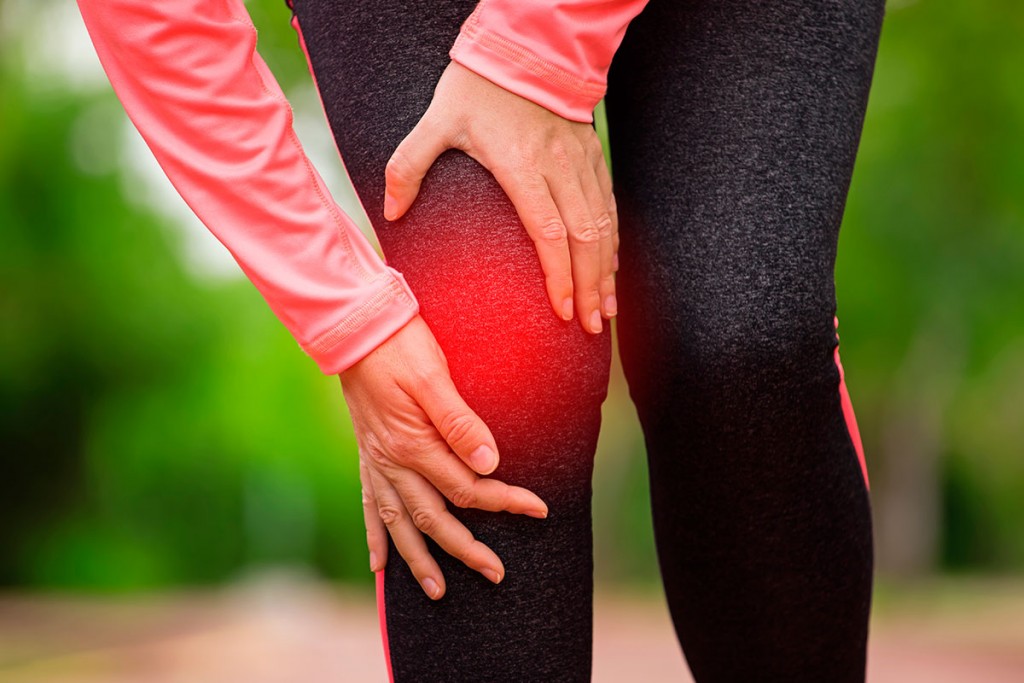
When you, or someone you know, experience severe knee pain caused either by a knee injury, Osteoarthritis or even Rheumatoid Arthritis, you’ll know how distressing and painful it can be to walk 200 yards to the grocery store, go about your everyday activities, get in and out of the bath or walk up and down the stairs, just to name a few examples.
While a knee injury may get better with time, knee pain caused by Arthritis is a degenerative process. Sometimes, a knee injury can even result in premature Osteoarthritic changes in that specific knee joint.
It is perhaps unsurprising, and everyone knows at least one person who suffers from knee pain either from injury, Arthritis or Osteoporosis. While there is no denying that our bodies will wear down as we age, it doesn’t mean we are all doomed.
As we age, we start thinking about the elderly we know afflicted with arthritis and it’s not uncommon to wonder how are they able to cope with the pain and mobility problems that come with it. This is especially true when you work at Stannah and are fortunate enough to be exposed to all the inspirational and beautiful testimonials we get from our customers – they’re true heroes! Their life stories make us think even more about what our customers go through, particularly those who suffer from knee joint pain, and how it has such a significant impact in their daily lives.
But why are we humans so prone to suffer from knee pain and knee injuries?
That is the question!
Scientifically speaking, as stated by Jennifer Ackerman in the National Geographic Magazine, the answer to that question is related to the Downside of Upright. In other words: “We can stand, walk, and run with grace and endurance, but we suffer aching feet and knee injuries; we can twist and torque our spines, and yet most of us are plagued by back trouble at some point in our lives”.
“We humans gave up stability and speed. We gave up the foot as a grasping tool. We gained spongy bones and fragile joints”. Jennifer Ackerman
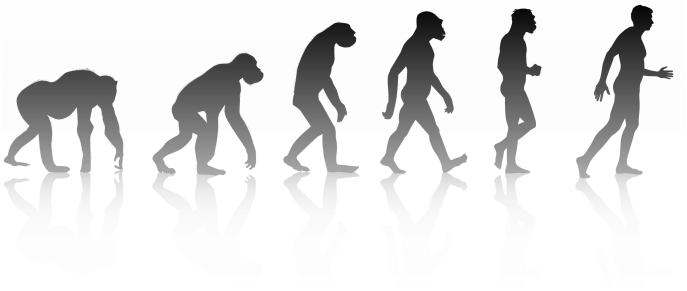
Whether it is out of curiosity or if you’re already afflicted by knee pain, you may want to continue reading this blog piece. We will answer your questions about knee pain and provide you with some insight into the degenerative process of the knee joint and some of the preventive measures you can take.
- What is the function of the knee?
- What is the cause of knee pain?
- What are the symptoms of Arthritis in the knee?
- How is it living with Osteoarthritis?
- How do you treat inflammation and stiffness in the knees?
- A Stairlift to spare your knees
- Prevention is care
What is the function of the knee ?
According to Jennifer Ackermen’s essay on “The Downside of Upright”, and as stated by Scott Dye, the knee joint is a “360-million-year-old structure beautifully designed to do its job of transferring load between limbs.” However, in standing upright we have put more stress and pressure to our knees, ankles and feet. In fact, knee joints are among the most easily injured joints in the human body, making knee replacement surgery a very common procedure in Canada, totaling 64000 procedures between 2015 and 2016 (according to the CJRR).
“Medical procedures involving knees total a million a year in the United States.”
This may sound daunting for those experiencing difficulties with knee pain or worried about their loved ones, and with good reason: knee pain or knee injury can lead to limited mobility, as knees are meant to provide the body with stability and flexibility. They also allow legs to bend and straighten. Both flexibility and stability are necessary if we want to stand, walk, run, kneel, jump or turn and have a normal life.
Because knees don’t work alone, there are other parts of the body that help knees fulfil their function, such as:
– Bones
– Cartilage
– Muscles
– Ligaments
– Tendons
If any of the parts mentioned is damaged or injured, it can cause severe knee pain.
While some will focus in the pain and become overwhelmed with negative emotions, others will be feel compelled to look for answers about the causes and what can be done to make it better.
What is the cause of knee pain?
Pain exists for an evolutionary reason. It’s like a message from our brain to make us aware that something is not right with our bodies and needs our immediate attention.
“One of the principle qualities of pain is that it demands an explanation.” in Plainwater, by Anne Carson
Right now, our focus is to understand what can cause knee pain. In fact, men, women and children can suffer from knee pain. It can happen to anyone, at any stage of life. However, it is more common as we grow older.
Let’s have a look at some knee injuries that can result in severe knee pain:
- Sudden movements or twists, strains and injuries to the ligaments and tendons that connect and support the knee structure;
- A tear in the meniscus (rubbery C-shaped disc that cushions your knee)
- Fracture of the kneecap (circular-triangular bone which articulates with the femur)
- Kneecap dislocation
- Overuse injuries or inflammation, after repetitive or prolonged pressure on the knee (stairclimbing, bicycle riding, jogging, jumping) or after surgery.
Athletes or Individuals whose job leads to repetitive stress on the knees are at considerable risk of developing a knee injury.
And that’s not all.
There is no certainty about what causes knee arthritis. Most researchers believe that it is a combination of factors:
- Muscle weakness
- Weight gain (obesity)
- Heredity
- Joint injury or repetitive stress
- Constant exposure to the cold
- Aging.
What is the difference between Rheumatoid Arthritis (RA) and Osteoarthritis (OA)?
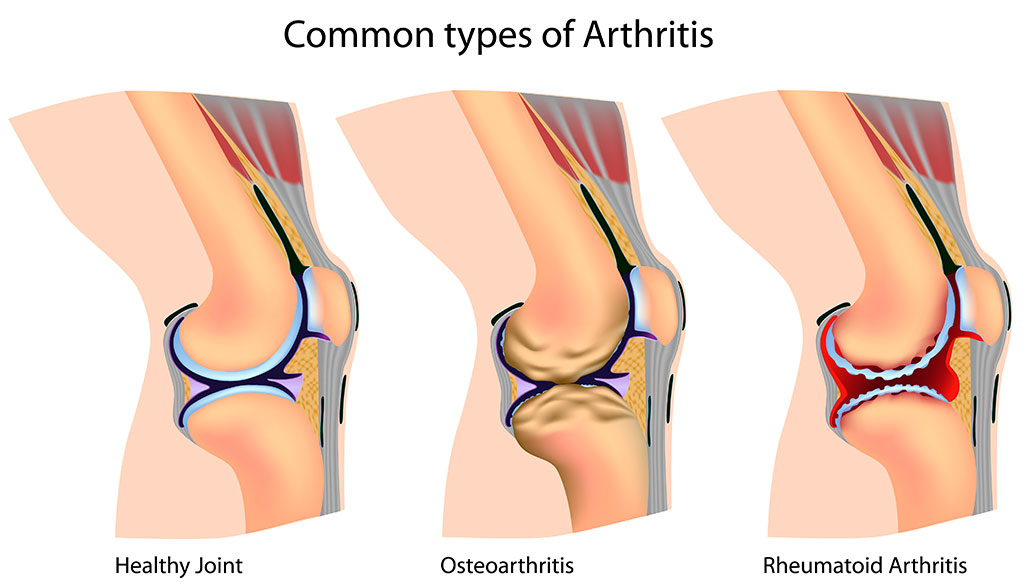
In fact, knee arthritis can be caused by a variety of conditions. Among the many causes, Rheumatoid Arthritis (RA) and Osteoarthritis (OA) are the most common:
- Osteoarthritis is prevalent at older ages and becomes virtually universal. So, sooner or later, our knees will start to fail. It is a continuous wearing out process, also known as “degenerative joint disease” that causes the cushion layer between knee bones, or cartilage to wear away and become thinner. Bone deformities increase the risk for Osteoarthritis in the knee since the joints are already malformed and may contain defective cartilage.
- Rheumatoid Arthritis is a common type of autoimmune disease that manifests as persistent inflammatory arthritis. It usually affects joints symmetrically, resulting in joint damage and systemic reactions. Specifically, knee arthritis is an inflammation that occurs in the knee joint. The inflammation caused by Rheumatoid Arthritis can progressively destroy the cartilage and bone around the knee joint.
Although these two conditions are distinct types of Arthritis, they share similar characteristics, but there are differences among their symptoms. Let’s have a look:
- RA affects joints and the surrounding muscles, whereas OA only affects joints.
- RA is passed on genetically and can manifest itself at any time during a person’s lifespan, whereas OA usually affects people in the latter stages of life.
- RA gets quickly and progressively worse, whereas OA is a slower degenerative process.
- RA is more severe than OS.
What are the symptoms of Rheumatoid Arthritis (RA) in knees?
Detecting RA in its initial stages can be challenging and you may well be wondering: What are the symptoms I should be aware of?
Symptoms can be especially present in the morning or after a long period of inactivity. For instance:
- Morning joint stiffness: While knee joint stiffness from OA can subside half an hour after it began, knee joint stiffness from RA will last much longer, possibly for a good chunk of the day.
- Cartilage in the knee begins to break down and leaves the bones of the knee rubbing against each other as you walk.
- Swelling or fluid around several joints at the same time, mostly wrists, hands, fingers and knee joints.
- Same joints affected on both sides of your body.
- Firm lumps under the skin (rheumatoid nodules).
- Ongoing fatigue, and low-grade fever.
- Loss of appetite.
You may feel that your knees are stiff and swollen, and pain will increase after high impact exercise. It is very likely that you won’t be able to move your knees as easily as you did before.
On the other hand, if the only thing you feel is noisy knees whenever you get up, don’t worry, this is very common. Even the New York Times devotes an article to this topic. Everyone has experienced noisy knees, but it is important to learn how to tell the difference between what is normal and what could be a sign of Arthritis.
Stannah took things a step further by creating a direct physical experience that could simulate several arthritic conditions (Arthritis Suite Experience). There is no better way to empathize and know the symptoms of RA than to feel them on your own skin. This specially engineered suit is composed of straps containing pebbles to simulate discomfort and the crackling sensation in your joints. It turns out knees and hands were the most painful spots and the most physically impairing.
What is it like to live with Osteoarthritis (OA)?
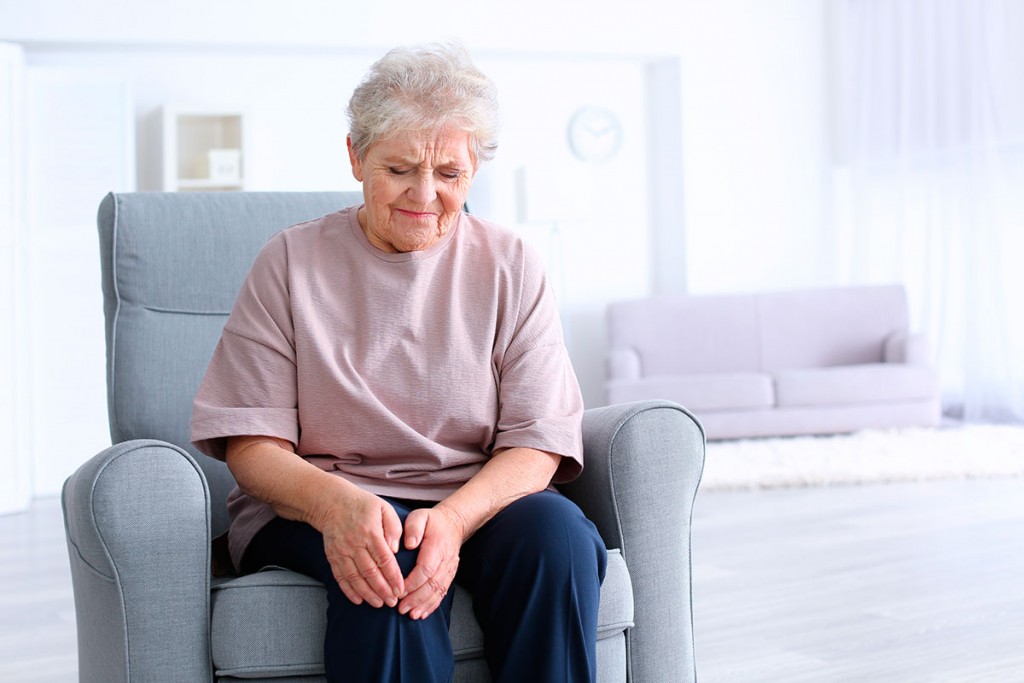
As we age, it’s common to feel that our joints are not as flexible as they were before. Getting old is not a painless process. If you are not sure what OA is, you may want to find out more about its causes and symptoms.
As for the cause of OA, it is not completely unveiled, although it appears to have a hereditary factor and to be a condition that will most likely develop with age. Women are more likely to be affected by OA than men after the age of 50. However, the first symptoms can appear in your forties and progress slowly.
The most common affection of OA is the wear and tear of cartilage. Cartilage covers the ends of bones and allows them to move against each other smoothly. However, if you have OA, this articular cartilage starts deteriorating gradually and becomes thinner.
A healthy knee will bend and straighten without any pain, thanks to this soft, spongy tissue that covers and protects the ends of the bones that join to form the knees. As people age, deterioration of cartilage can occur and bone friction will cause pain.
Women are more likely to be affected by osteoarthritis than men after the age of 50.
In some cases, OA may even cause problems with mobility and people can find simple tasks very difficult to do, such as carrying things up and down the stairs unaided or without using the hand rail.
While exercise will not be the cause of OA, an injury resulting from excessive exercise or an accident may end up leading to an Osteoarthritis.
There are several factors that promote the onset of OA:
- Age: the ability for the cartilage to repair will decrease with age.
- Injury: a previous knee injury, like a sports injury, can cause OA in the future.
- Weight: the more you weigh, the more effort is made by your knees, which will affect your joints.
- Heritage: some genes are associated with OA. Having arched legs or tired joints can increase the risk of having this disease.
- Excessive use: people who kneel or bend over a lot, lift heavy objects or walk a lot as part of their work are more vulnerable to knee injuries or wear. This will make them more prone to developing OA in the future.
- Other diseases – for instance, people with Lupus or Lyme disease have a higher probability of developing OA.
Bearing in mind that OA it will get worse with time, the sooner you start prevention, the better.
How do you treat inflammation and stiffness in knees?
Although there is no cure for Rheumatoid Arthritis (RA) and Osteoarthritis (OA), there are treatments that can lower joint inflammation and pain. Early, aggressive treatments are key to slowing down or stopping arthritis. If you are in the initial stages of any of these conditions, you must focus on preventing joint damage by sparing your knees for as long as possible.
If pain is unbearable, your doctor can prescribe you some medication. Usually, taking painkillers or steroid injections in the affected area can provide immediate relief. However, because of the many side affects, you should know there are alternatives:
- Rubbing anti-inflammatory cream on your knees to relieve pain and swelling;
- A physiotherapist can teach you some exercises to help you increase your range of movement to strengthen the muscles around your knee, without doing any more damage.
On the other hand, if the pain is bearable but still affects your daily routine, your doctor can recommend some changes you should make to your lifestyle to protect your joints and slow down the degeneration of cartilage.
- Minimal impact exercise: walking, swimming and water aerobics are the best options. Remember to wear appropriate footwear that lowers the impact on knee joints while walking. However, it is advisable to take a short break from exercise if your symptoms flare up.
- Exercise your quads: always with minimal impact exercise, you should exercise your quads. The strengthening of your hip muscles will increase your capacity for movement and relieve knee pain.
- A splint can provide joint or bone support and relieve the pain and discomfort.
- Take glucosamine supplements to relieve mild symptoms. Glucosamine is a chemical that can naturally be found in cartilage, and it is believed that eating it might help build up new cartilage.
- Diet: although there isn’t a specific diet for this condition, some people find that symptoms and inflammation are worsened by foods that have high fat or dairy content. On the other hand, they find relief with the regular ingestion of Omega-3 fatty acids, like those found in salmon, tofu and walnuts. A Mediterranean diet, rich in fruits, vegetables, cereals and olive oil can also improve physical functioning and vitality.
- Lose weight: If you have excess weight, your OA can get worse. Losing a few pounds can make a huge amount of difference to the amount of tension on your knee. You should try to keep your weight as close as possible to what’s recommended for your height and age.
- Rest and spare your knee when it is hurting.
- Acupuncture: it has been practiced for more than 3000 years and is thought to relieve pain through the release of neurochemicals, by stimulating certain parts of the body.
- Vitamin D: According to the CHMAS, 40% of Canadians had concentrations of vitamin D below the cut-off in winter, compared with 25% in summer. Lack of sun can cause vitamin D deficiency and vitamin D deficiency has been linked with other autoimmune diseases. However, be extra-careful when going out into the sun and use sunscreen with a high SPF.
Studies suggest that people who receive prompt treatment for Rheumatoid Arthritis or Osteoarthritis feel better sooner and more often, and are more likely to have an active lifestyle. They are also less likely to have the type of joint damage that leads to joint surgery or joint replacement.
However, if the lifestyle changes mentioned did not work on your severely damaged knee joint, causing you physical impairment, surgery could be an option. The 3 most common medical procedures are:
- Artroscopia: removal of any loose pieces of cartilage to soften the surface of the cartilage. This procedure will be less effective the more advanced the osteoarthritis is.
- Osteotomia: cutting out part of the bone near the knee to reduce tension on the knee.
- Knee replacement: this can be a partial replacement of the injured parts or a total replacement of the knee with a prosthetic knee.
After knee surgery, recovery can take over 12 weeks. In the meantime, patients must be extremely careful during these critical weeks of recovery because the slightest effort or tension on the knee can lead to a litany of complications.
While some individuals suffering from any of these conditions may develop health complications, many of them can be avoided though maintaining a healthy lifestyle and a preventive approach, focused on symptom management.
Nevertheless, the importance of preventive measures is often neglected, but Stannah highlights prevention as a key factor in delaying the development of this seemingly inevitable condition.
A Stairlift to spare your knees
If you are prone to suffer from knee joint damage and pain, be cautious with any activity that puts pressure or tension on your knee joints, like heavy weight lifting or climbing up and down the stairs carrying weight. Moreover, our customers tell us that using the stairs happens to be the first activity in which their knees start to hurt.
Why do knees hurt when climbing stairs?
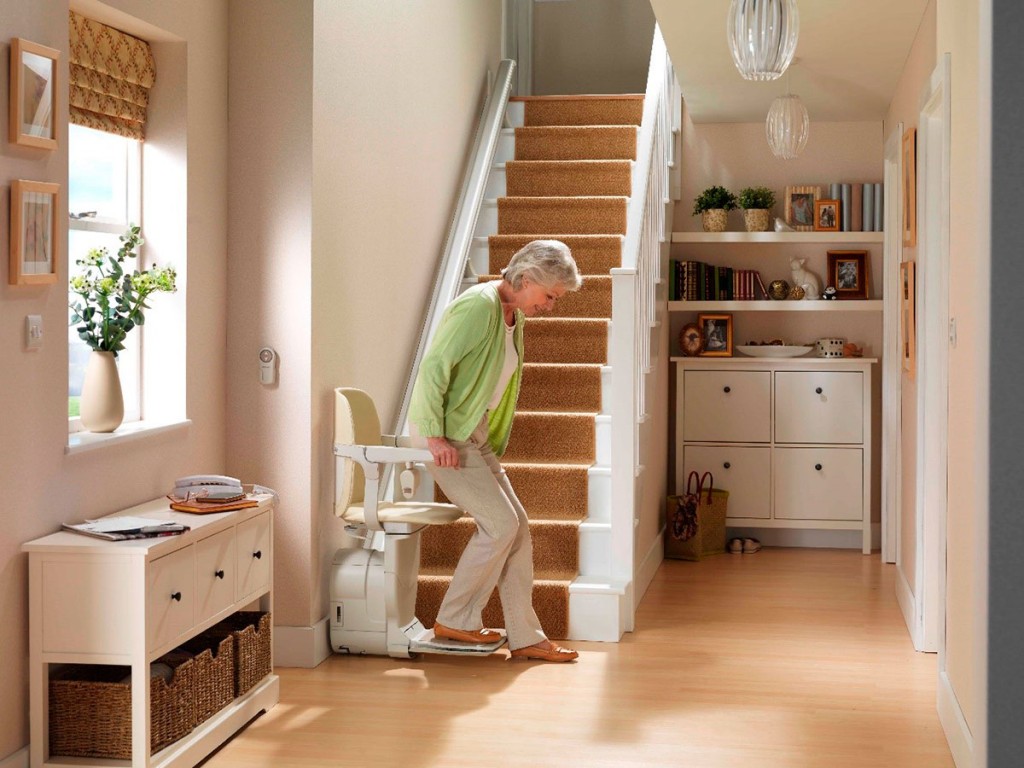
Knees often hurt going up or down stairs. But why does this happen? With all the information provided in this blog post, you should be able to identify the reason very easily: the kneecap is forced to slide up and down over the femur more than usual. If the cartilage is worn down, you may feel pain as the bones rub on rough cartilage.
You really should save your knees and energy for more pleasurable activities. By doing this, you will be able to slow down or reverse knee joint damage.
Mobility appliances and devices, such as walking sticks, adequate footwear and stairlifts have modest benefits but can provide some relief as you spare your knees from constant tension. You can never have too many reminders that if you spare your knees, you might also avoid surgery and maintain independence for longer. Loss of independence fuels other problems, from depression to weight gain and sleep disruption.
The importance of being active cannot be understated, but when it comes to daily routines like carrying things up and downstairs, it can cause more harm than good, resulting in knee joint problems or even resulting in severe cartilage degradation.
Therefore, for those who are active but still have difficulty going up or down the stairs in their home, a stairlift serves as a perfect complimentary and preventative option.
This statement finds proof not only in our knowledgeable employees, but mainly in recent research carried out by Stannah across several European countries and in the United States. This research has shown that joint pain is one of the main causes of mobility issues.
- 50 % of stairlift users have knee joint problems;
- 61% of potential users have knee joint problems.
In fact, 50% of stairlift users have joint problems and 61% of potential users have also reported knee/joint problems.
So, this is evidence that knee problems are particularly common and cause physical impairment that makes climbing stairs more difficult and even dangerous.
From another perspective, knee joint problems account for 50% of mobility issues. Other important ones are:
- Skeletal (knee joints) 50 %;
- Fatigue (32%);
- Balance/stability (30%);
- Respiratory (23%);
- Cardiovascular (21%);
- Neurological (14%);
- Visual (12%).
Although RA and OA symptoms can become incapacitating, your parents may choose to stay at home and you’ll have concerns about how they will traverse the stairs in their home without assistance.
Prevention is care
Prevention is better than cure. Especially when something has no cure, such as the case of Rheumatoid Arthritis (RA) and Osteoarthritis (OA).
More than half of potential users consider stairlifts to be an engineering solution that provides a real benefit to everyday life. We try to stress that prevention comes first and provide customers with useful and educational information. Stairlifts have been considered both a preventive measure and a solution.
Stannah really cares about its customers and understands the extent of the difficulty they experience when using stairs. Being able to empathize with our customers is crucial to developing a more accurate understanding of their needs. This sort of empathy is a key factor in designing the best products for our customers. And, while the technical aspects are important, we also spend a substantial amount of time reviewing literature concerning aging, so that we can better understand and relate to our customers.
At the end of the day, we feel fortunate to witness the most inspiring stories of customers that have been through all the struggles of aging and arthritis. It is always an emotional journey and we understand how coping with pain, limitation, frustration and dependency may affect our elders psychologically.
“An ounce of prevention is worth a pound of cure.”
By Benjamin Franklin
So, if you have a loved one, a friend or colleague that suffers from knee pain, you may be able to picture the real obstacles they face. However, we must understand that it can be very stressful for them to accept their condition and their physical limitations. Apart from the pain, the inability to move freely within their home can create a sense of hopelessness and loss of control and even depression. It is difficult for our loved ones to understand they may no longer be capable of performing certain tasks. It is not uncommon for them to continue to attempt their normal routine even if they physically are no longer able to do so.
As a caregiver, you definitely want to have the peace of mind to know your relative is safe, secure and has the freedom to move about their entire home with complete independence.
Although there might be no definite solution for knee pain or knee issues, a stairlift can help prevent further damage on your knee joint.
Hopefully, this blog post has improved your understanding of knee joint problems. Better treatments and definite solutions would be great, but comprehension and empathy is always a good start on the path towards prevention.
Prevention is care!

 USA
USA